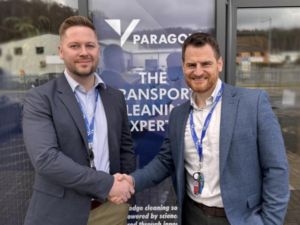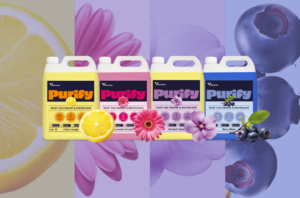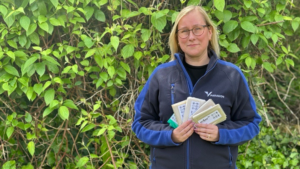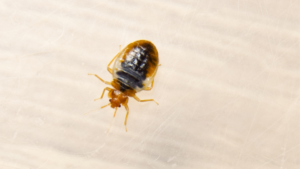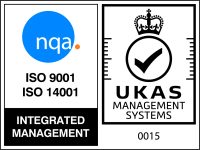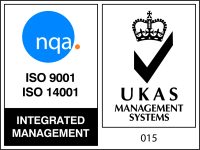UVC in the spotlight for workplace disinfection
Ultraviolet C (UVC) disinfection isn’t new, but it was barely a blip on the radar before COVID-19. Now there’s a renewed interest in using both new and old technologies to help stop the spread of the virus in commercial environments.
What is UVC?
UVC lamps, also known as germicidal lamps, are the most common UV lights used for disinfection. These microbe-exterminating rays have been used for decades to disinfect non-porous surfaces, air, and water. It’s a well-established way to eliminate harmful pathogens without using chemical disinfectants.
Many businesses consider UVC lamps as part of their wider protection strategy in the fight against harmful microbes. But that doesn’t mean UVC lamps are the best choice for every environment or surface. They carry risks, and there is limited research into the efficacy of UV light on COVID-19.
But what does the research tell us so far? And where is UV–C disinfection most commonly used? Read on to find out whether UVC is a suitable solution for disinfecting your work environment.
How does UVC light disinfection work?
UVC is an ultraviolet light that operates on short wavelengths between 100-280 nm (nanometres). The rays from UVC destroy genetic material by breaking down its DNA and RNA structure. This inactivates viruses and harmful bacteria, preventing them from infecting humans and other organic life.
Though there is limited research into the effect of UV light on Covid-19, UVC light is likely to be effective in the same way that it is effective against other novel coronaviruses.
Is UVC disinfection safe?
Because it destroys genetic material, most UVC germicidal lamps are particularly harmful to the skin and eyes. In fact, UVC is the most damaging type of UV radiation, which is why precautions are necessary. More on the required measures a bit later.
Most UVC germicidal lamps used to disinfect spaces are mercury lamps. These lamps usually operate at 254 nm. At this wavelength, it poses a significant hazard to unprotected workers exposed to the light. Especially with eye contact.
A newer type of UVC, known as far-UVC, operates at a wavelength that can barely penetrate the skin. Far-UVC operates between 207 – 222 nm, and much like the harsher wavelengths, can inactivate 99.9% of airborne coronaviruses.
However, effective far-UVC is only produced by excimer lamps. These high-tech lamps are costly and complicated to operate.
The third option is LED lights. Although they don’t operate effectively at far-UVC wavelengths, they offer much greater stability, instantaneous on/off, and can be manufactured to operate narrowly at the optimum application wavelength. They can also be quite affordable. This makes them a potential consideration over mercury lamps, which can be more cumbersome to use.
Why you might choose UVC disinfection
There are benefits and drawbacks to using UVC disinfection.
The good:
UVC is ideal in environments where it may not be possible to use chemicals, like food manufacturing and sensitive medical applications.
Not having to use as many chemical disinfectants could provide financial savings long-term. UV light has a low energy cost, and lamps typically last for thousands of hours without needing to be serviced.
UV light is non-toxic. Some lamps are also more environmentally friendly, like UV LEDs. These lights last for a long time, don’t contain harmful elements like mercury, and they are fully recyclable. The environmental impact may align with your organisation if it is conscientious about sustainability.
The bad:
However, UVC light needs to be shone directly over surfaces to disinfect them. It won’t disinfect any surface that isn’t in direct contact with the light. You must also hold the lamp over surfaces for an adequate amount of time. This could mean going over the same areas several times to ensure sufficient virus inactivation.
This is why, although UVC is demonstrably effective, it is still recommended to use UVC in tandem with chemical disinfection.
Common environments
UVC disinfection is used in numerous public and commercial environments to disinfect the air, surfaces, equipment, food and wastewater. Some areas UVC is used are:
- Hospitals and care homes
- Surgeries
- Aeroplanes
- Aquariums
- Public transport
- Schools and nurseries
- Food manufacturing
- Warehouses
How to handle UVC safely
UVC lamps, like other UV light sources, produce Artificial Optical Radiation (AOR). That means there are certain legal requirements to follow to ensure employees aren’t exposed to harmful radiation in the workplace.
To ensure compliance:
- Implement measures to shield employees from the light
- Place warning labels in the appropriate locations
- Train staff on best-practices and supply them with useful information
- Issue protective equipment like goggles and UV shields where necessary
- Restrict employees’ ability to access areas where UVC lamps are in use
HSE provide full guidance on how to follow the Control of Artificial Optical Radiation at Work Regulations 2010.
What’s next?
There is a growing market and an increasing variety of choices for businesses looking for UVC disinfection.
Mercury lamps are currently the market standard, but LED UVC disinfection is snowballing, and cutting-edge technology like excimer lamps offer safe and accurate disinfection in medical settings. Even with skin contact.
It’s recommended that you evaluate all potential avenues to find a solution that suits your disinfection strategy and environmental goals, before hitting the panic button due to current events.



